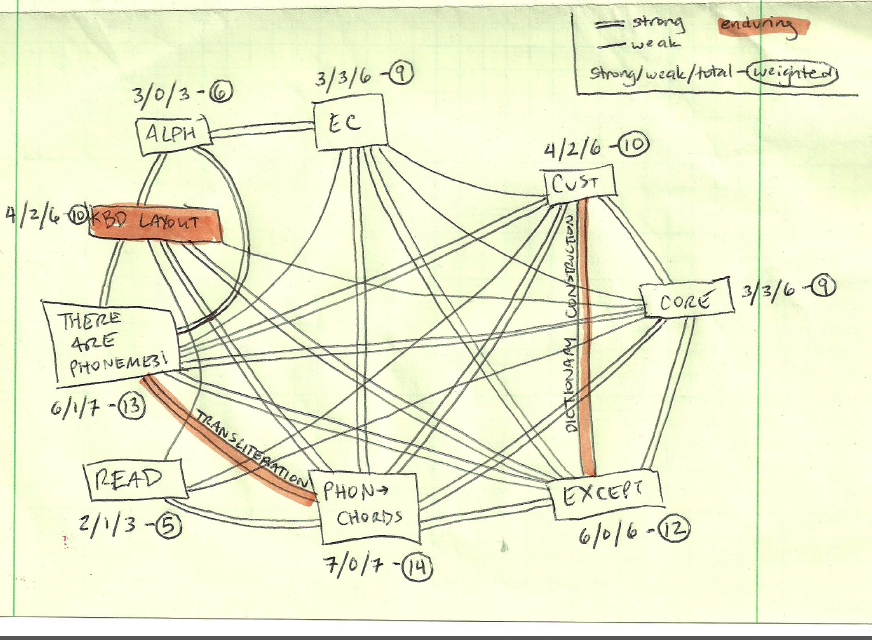First off, I spent a marvelous afternoon with longtime Plover supporter Mel Chua (who wrote the opensource.com article that grew our community exponentially) at the end of April, and we worked out some ways to attack steno pedagogy for Plover users. She wrote a great article on what we came up with for her blog, so I'm just gonna point you there:

Applying Pedagogical Skillz to FOSS Projects: Plover Case Study
Second, I've found an even better solution to the stenification of a Sidewinder: Lasers!
I've got Mel to thank for this too; when I explained that the epoxy casting process was a little tedious because of the 24-hour curing time, she asked me if I'd looked into laser cutting. I knew about laser cutting because it's used all the time in one of the graduate design programs I CART for, but I'd mostly seen them use it on cardboard, paper, and rubber stamps; I didn't know that it was practical to use on hard plastic. But I contacted Sara Gould from In a Flash Laser (who I've known on Twitter for years; she's a CI-wearing musician, engineer, and all-around fascinating person), and she sent me a handful of laser-cut steno keys to see if they were what I was looking for. Turns out they were actually way better. They were more rigid than the epoxy, so I didn't have to worry about them accidentally bending on me, they didn't have the slightly annoying beveling, and I was able to make them a bit smaller than the molded keys, which meant I only had to affix them to the Sidewinder with one square of mounting foam instead of two. Triple bonus! Plus they're very affordable, and having them made by a professional laser-cutting company instead of me in my off time means we can always have a decent quantity in stock. I immediately sent off for 20 sets, and as soon as they arrive, I'll start assembling them. I'm only planning on having 10 assembled Sidewinders onsite at the PyGotham Plover Workshop, so I'll have 10 more sets to sell or give away to Plover code contributors.
Speaking of PyGotham and code contribution... The last exciting thing:
There's going to be a coding sprint on Plover from 6 pm to midnight on June 8th, hosted by PyGotham and several of its sponsors! There'll be free food and drinks, live music, some awesome-weird electronic art, and our own Hesky there to help with the coding. I'll be there to weigh in on the steno side, of course, and Josh might even be able to attend via IRC for at least part of the night. It's gonna be amazing.
So between now and then I'll be cleaning up the Launchpad page, adding, editing, and documenting bugs and blueprints. I've been using Plover exclusively for my transcription work over the past several weeks, so I've been able to keep a running log of stuff that still needs to be improved on as I transcribe. I even made a single stroke command for it:
"KW-RPB": "{#Escape}:split plovernotes.txt{#Return}",
When I'm in Vim, all I have to do is write KW-RPB, and my plovernotes file will come up on the top half of the screen. Then I write the mistranslated word or iteration of a particular bug, write ZZ (STKPW*P/STKPW*P), the window closes, and I'm back in my transcription file without ever lifting my hands from the keyboard. It's fabulous. So I've been building up a fine raft of bugs to squash during the coding sprint. Spread the word!
2 comments:
Back home, industries use water jet cutting perth on cutting various materials. It offers the same flexibility and accuracy of laser cutting.
Post a Comment